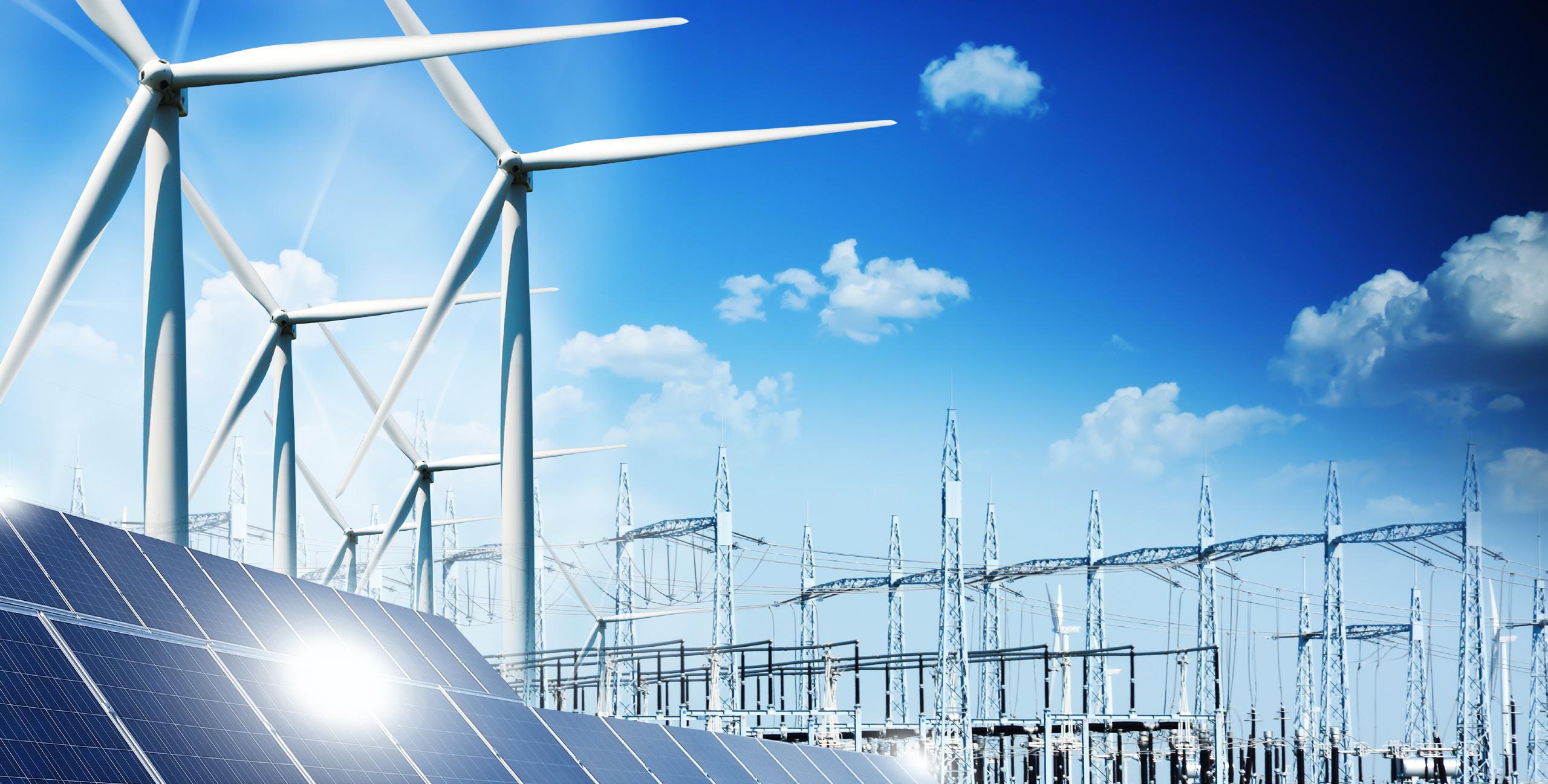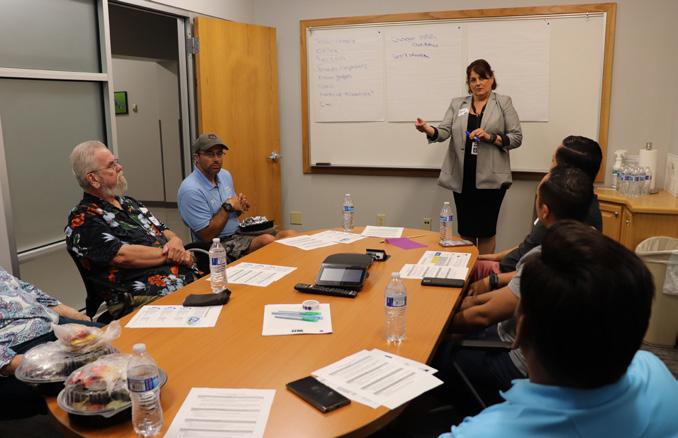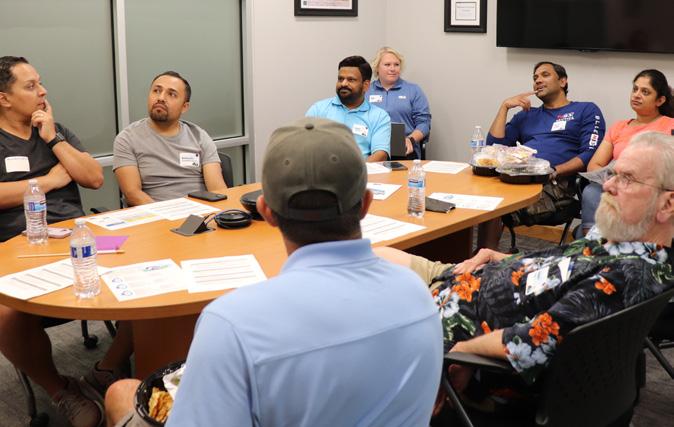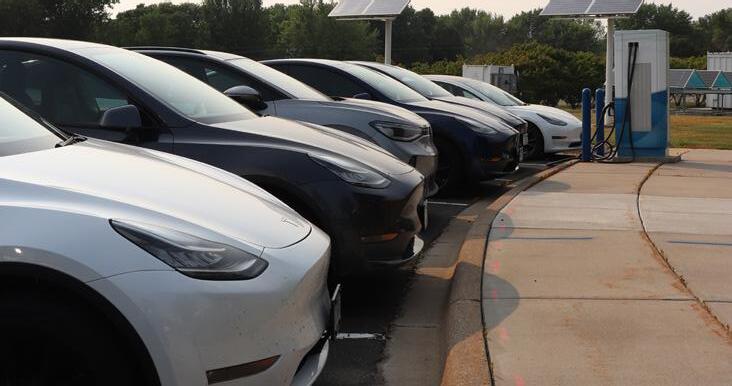
4 minute read
Technology investments are key to delivering the reliable grid of the future
In modern America, our expectations for reliable electricity are almost reflexive – something we have automatically, without thinking about it. We flip the switch, the light comes on and that is that.
As you can imagine, at Wright-Hennepin (WH) we know it’s a little more complicated. It takes a lot of investment, planning and relentless effort to ensure you and your family enjoy reliable power. And we’re proud of our record in bringing it to you. On average, our members are without power about a half hour per year, which means you enjoy uninterrupted power 99.99% of the time. This also puts WH in the top 10% of electric distribution systems in the country for reliability.
Advertisement
But delivering these kind of results isn’t easy. To accomplish it, WH must make constant investments in new lines and substations, maintain them once installed and manage a 24/7/365 grid at the speed of light. So, let’s take a look at some of the ways we achieve this and where we’re headed in the future.
The cornerstone of WH’s grid is our 29 substations. In the past five years alone, WH has built or upgraded five substations and we have another five planned over the next four years. Each one costs $2 to $3 million. In turn, this puts pressure on the co-op’s capital expenditures (money used to finance assets), which are up 60% from 2019.
Why? The grid and energy use are expanding. New services in our footprint are rapidly growing. What’s more, over the next 10 years, much of the transportation sector will be electrified with electric vehicles (EVs) filling residential garages and commercial fleets converting from internal combustion engines. In turn, this means we must plan, finance and deliver a reliable electric grid well ahead of when this increased demand actually materializes.
In addition to traditional infrastructure investments, WH will accomplish this by deploying cutting-edge technology. Here are just a few of the projects we’re working on now:
1. Advanced Meter Infrastructure (AMI): WH is in the third year of our effort to replace every single meter on our system. This new AMI system will allow us to read members’ usage hourly, not just daily. In turn, consumers will be able to track their own energy use online in close to real time. AMI also helps us manage our system to prevent and respond to outages. This $12 million project will be complete by the end of 2023.
2. Demand Management Receiver (DMR) upgrades: In addition, WH is currently engaged in a $4 million effort to replace every demand management receiver on our system over the next five years. DMRs are the little devices connected to your air conditioner, electric water heater or dual fuel pump that allow us to control them (for those who choose to participate) in exchange for discounted energy. Many receivers have been in place since the late 1980s and ’90s. To continue to offer you Energy-Saving Programs, we must continue to invest in the technology that makes them possible.
3. Supervisory Control and Data Acquisition (SCADA): That title sounds complicated. But think of our SCADA as the central nervous system for our grid. In our control room, we can see every substation, feeder line, transformer and, ultimately, every meter on our system. As the grid becomes more decentralized, a modern SCADA system is critical to eventually allowing the two-way flow of electrons. SCADA is also critical to ensuring both greater flexibility and resiliency on our system.
Longer term challenges include the need to interconnect with more and more distributed energy resources, to integrate more intermittent resources like wind and solar, and to identify, balance, serve and even export load coming from anywhere on our grid.
And as the grid expands, we are also ever mindful that we must also ensure robust cybersecurity. We recognize that the electric grid is a target for bad actors, and we are committed to providing the hardware, software and security protections we need to ensure reliability.
Of course, at WH, we neither expect nor want you to have to think about all this the next time you flip a light switch. But please know we are thinking about, planning for and building the grid of the future. It’s all part of our commitment to you and your family to deliver reliable power at rates approaching 100% for decades to come.
As always, Thank you for your business.
Tim Sullivan

WH Board votes to cut PCA for summer
WH’s Board of Directors voted to reduce the Power Cost Adjustment (PCA) charge for residential members’ electric bills this summer.
The PCA is an adjustable portion of members’ bill that is meant to balance the fluctuating price of purchasing power from WH’s two wholesale power suppliers. As the cost of buying power has consistently been lower than anticipated over the last several months due to the softening power supply market, WH’s Board voted to decrease the PCA for the months of July and August. The reduction will be a total of $1.5 million, bringing WH’s typical residential bill projection to $148.44 by year-end 2023; a projected 11.46% competitive advantage over Xcel. This PCA reduction results in a typical residential bill adjustment for WH members of $3.48 less than the original 2023 adopted budget projection.
The Board chose a PCA reduction over a special capital credit refund because it “reduces bills immediately rather than refunding dollars later,” said Chief Financial Officer Brian Swanson.


Rate changes for 2023
Based on the typical residential monthly bill of 1,000 kWh, the average bill will increase $3.48 less than anticipated. The average monthly residential bill is projected to be 11.46% less than Xcel, through year-end 2023.
$0.02955
Basic charge $19.90 $19.90
Average residential bill $151.92 $148.44
Energy Rate 9.95 cents 9.95 cents

*Power Cost Adjustment
WH hosts EV advisory meeting
Wright-Hennepin (WH) hosted an electric vehicle (EV) advisory meeting on June 15, with more than 60 members who own EVs taking time out of their evening. WH learned about their experience purchasing and owning an EV, how WH can educate others, and member views of WH’s EV Energy-Saving Program offerings. After brief presentations from WH Holding’s Chief Operating Officer Wendy Youngren and WH’s Community Relations and Beneficial Electrification Director Annette Kuyper, members were split into ten small groups led by facilitators from WH, Great Plains Institute, and Great River Energy. Members were asked to share what factors led them to purchase their specific EVs and home charging stations. They also had an opportunity to offer input on WH’s EV-related Energy-Saving Programs and educational opportunities for those who may be considering an EV for their next vehicle.
Thank you to the members who attended! If you’re thinking about purchasing an EV, please visit our website for more information about WH’s Energy-Saving Programs for EV charging.





